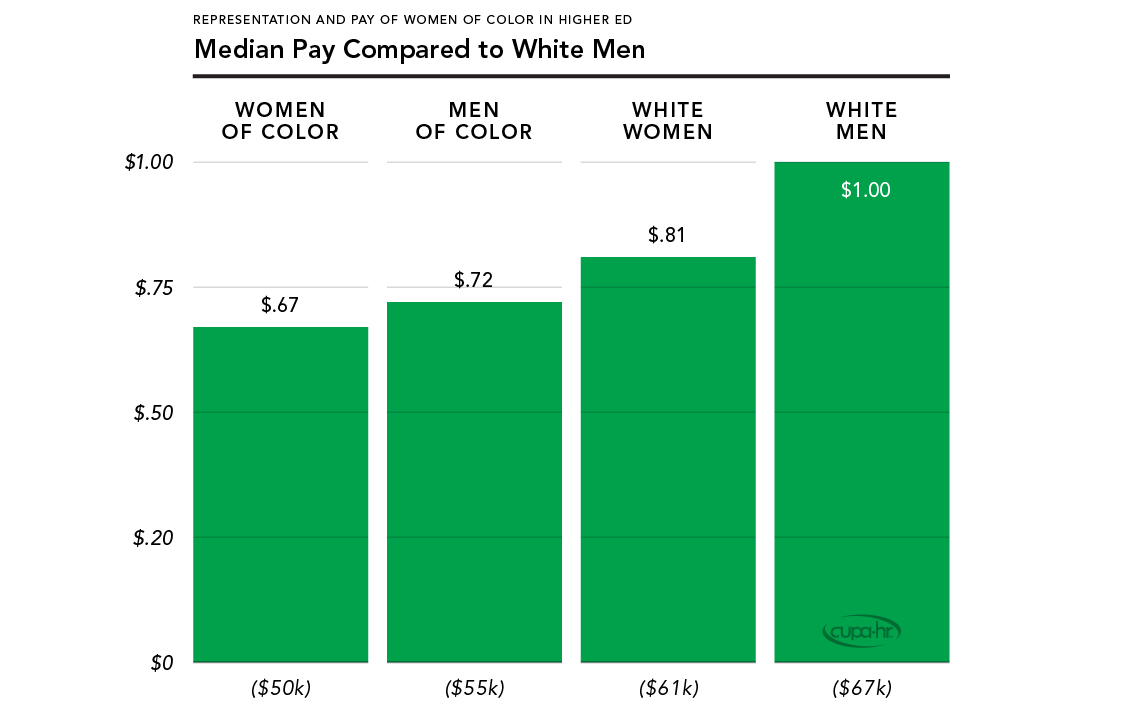Underpaid and Underrepresented: Women of Color in the Higher Ed Workforce
“Intersectionality” – the combination of discrimination or bias experienced by individuals with overlapping identities, each of which is associated with discrimination on its own.
Research has shown that women and minorities each face their own challenges related to equal pay and representation in the higher ed workforce — women working in higher ed leadership earn less than White men; women are underrepresented in higher-paying, more prestigious positions in American colleges and universities; and minorities are underrepresented, particularly in high-level higher ed jobs, and underpaid in the majority of campus jobs.
But how do these inequities intersect for women of color?
CUPA-HR’s new research brief, Representation and Pay of Women of Color in the Higher Education Workforce, seeks to answer this question by examining representation and pay equity for the intersection of two groups: women and individuals who identify as either Black/African American or Hispanic/Latino. The brief explores the kinds of inequity women and ethnic minorities experience and how inequities differ by position type.
Here are some findings:
- Women of color are paid only 67 cents on the dollar compared to White men in the higher education workforce.
- In three out of four job types (professional, staff and faculty) women of color are paid less than White men, men of color and White women.
- Women of color are underrepresented in the higher ed workforce as a whole compared to their representation in the U.S. population.
- Women of color are represented more in lower-paying staff positions and less in higher-paying faculty, professional and administrative roles. This stands in contrast to White men, whose representation increases significantly with pay and position level.

So how do we begin to address these pay and representation inequities among women of color in the higher ed workforce? Here are four steps higher ed HR professionals can take:
- Share this brief with your institution’s leadership.
- Evaluate internal equity for both pay and representation across different job categories. Consider demographic factors both independently and in combination.
- Compare with peer institutions using detailed and accurate salary data. In this way, ensure fair market wages for all employees and establish competitive salaries when it’s necessary to compete for a limited pool of minority candidates.
- Take analyses beyond wages and consider employee turnover, age and experience. This may allow for a longer-term view and the ability to address the pipeline of minority women incumbents who could potentially be promoted into higher-prestige roles.
Says Jasper McChesney, author of the brief, “Equity issues cannot be solved overnight, but by planning strategically, with unbiased data, higher education institutions can continue taking steps toward more diverse and equitable campuses.”
Read the Representation and Pay of Women of Color in the Higher Education Workforce brief, and check out CUPA-HR’s other research briefs.
This brief was made possible with support from Fidelity Investments.


